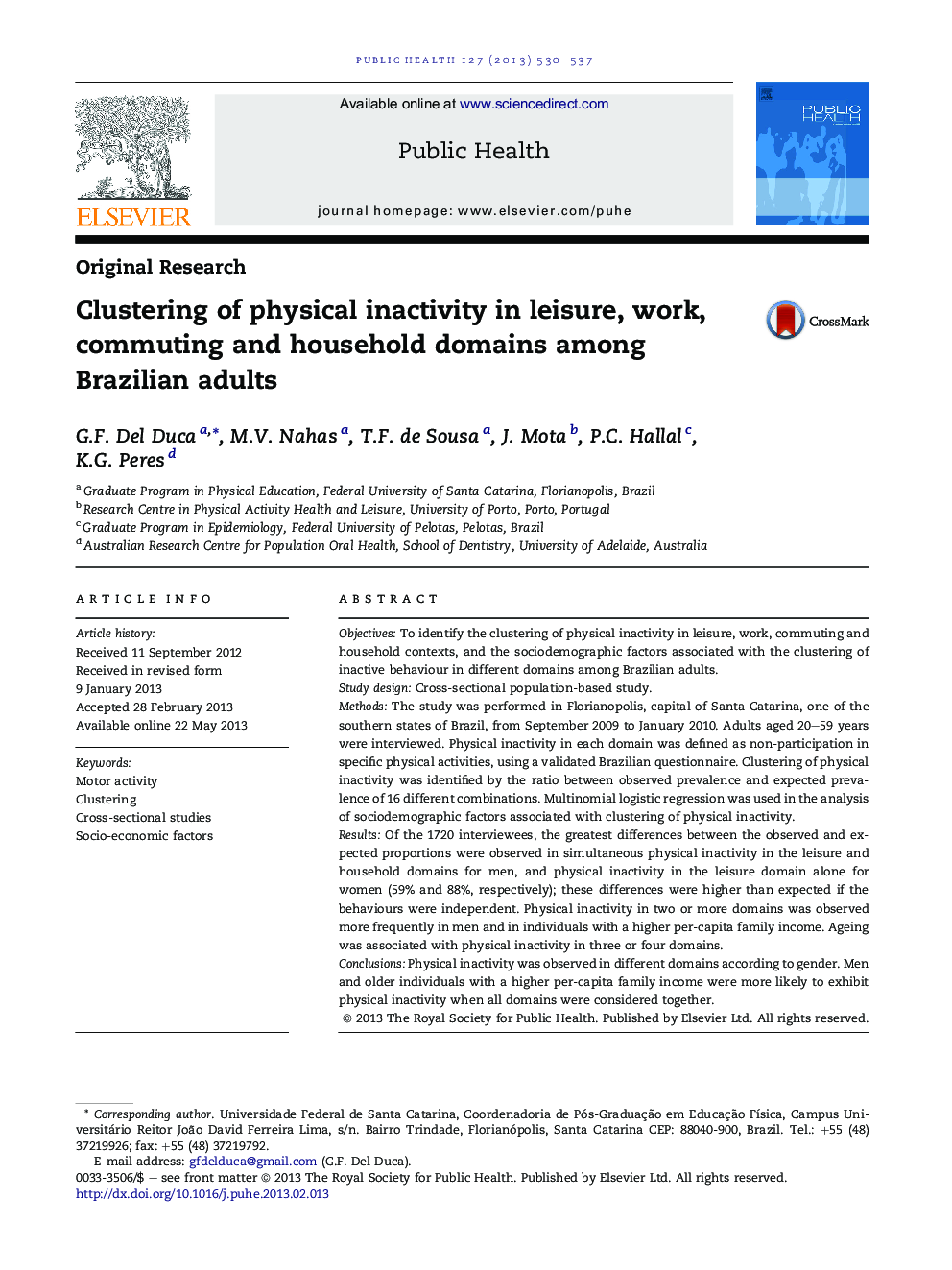| Article ID | Journal | Published Year | Pages | File Type |
|---|---|---|---|---|
| 1087633 | Public Health | 2013 | 8 Pages |
ObjectivesTo identify the clustering of physical inactivity in leisure, work, commuting and household contexts, and the sociodemographic factors associated with the clustering of inactive behaviour in different domains among Brazilian adults.Study designCross-sectional population-based study.MethodsThe study was performed in Florianopolis, capital of Santa Catarina, one of the southern states of Brazil, from September 2009 to January 2010. Adults aged 20–59 years were interviewed. Physical inactivity in each domain was defined as non-participation in specific physical activities, using a validated Brazilian questionnaire. Clustering of physical inactivity was identified by the ratio between observed prevalence and expected prevalence of 16 different combinations. Multinomial logistic regression was used in the analysis of sociodemographic factors associated with clustering of physical inactivity.ResultsOf the 1720 interviewees, the greatest differences between the observed and expected proportions were observed in simultaneous physical inactivity in the leisure and household domains for men, and physical inactivity in the leisure domain alone for women (59% and 88%, respectively); these differences were higher than expected if the behaviours were independent. Physical inactivity in two or more domains was observed more frequently in men and in individuals with a higher per-capita family income. Ageing was associated with physical inactivity in three or four domains.ConclusionsPhysical inactivity was observed in different domains according to gender. Men and older individuals with a higher per-capita family income were more likely to exhibit physical inactivity when all domains were considered together.
